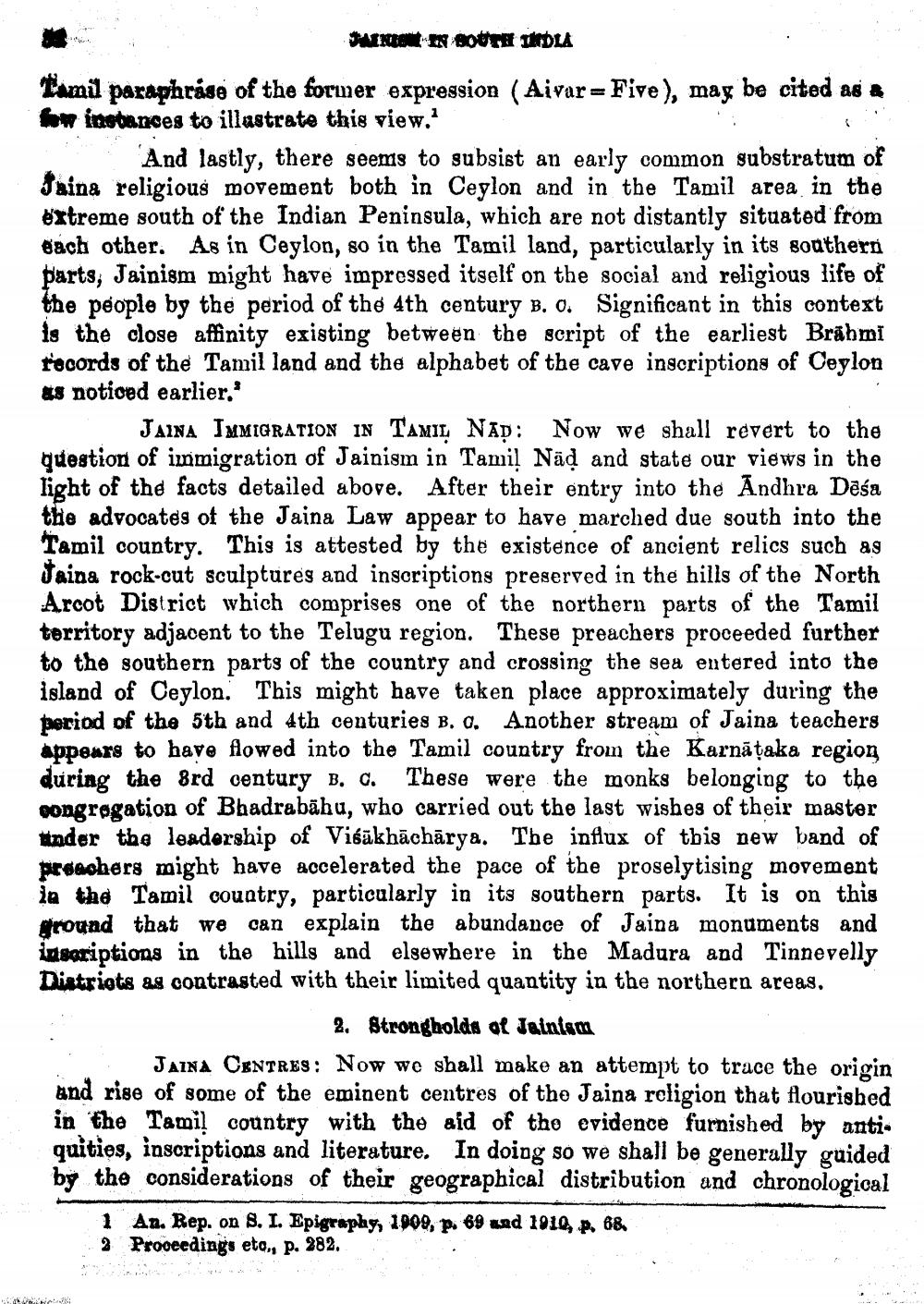________________
+
SAIKI IN SOUTH INDIA Hami paraphrase of the former expression (Aivar = Five), may be cited as a for instances to illastrate this view.'
And lastly, there seems to subsist an early common substratum of Jaina religious movement both in Ceylon and in the Tamil area in the extreme south of the Indian Peninsula, which are not distantly situated from each other. As in Ceylon, so in the Tamil land, particularly in its southern parts, Jainism might have impressed itself on the social and religious life of the people by the period of the 4th century B. o. Significant in this context is the close affinity existing between the script of the earliest Brāhmi records of the Tamil land and the alphabet of the cave inscriptions of Ceylon as noticed earlier.
JAINA IMMIGRATION IN TAMIỊ NÁD: Now we shall revert to the question of immigration of Jainism in Tamil Näd and state our views in the light of the facts detailed above. After their entry into the Andhra Desa the advocates of the Jaina Law appear to have marched due south into the Tamil country. This is attested by the existence of ancient relics such as Jaina rock-cut sculptures and inscriptions preserved in the hills of the North Arcot District which comprises one of the northern parts of the Tamil territory adjacent to the Telugu region. These preachers proceeded further to the southern parts of the country and crossing the sea entered into the island of Ceylon. This might have taken place approximately during the period of the 5th and 4th centuries B. O. Another stream of Jaina teachers appears to have flowed into the Tamil country from the Karnāțaka region during the 8rd century B. G. These were the monks belonging to the songrogation of Bhadrabāhu, who carried out the last wishes of their master tinder the leadership of Višākhāchārya. The influx of this new band of preachers might have accelerated the pace of the proselytising movement in the Tamil couatry, particularly in its southern parts. It is on this Arouad that we can explain the abundance of Jaina monu inscriptions in the hills and elsewhere in the Madura and Tinnevelly Diatriats as contrasted with their limited quantity in the northern areas.
2. Strongholds of Jainiam JAINA CENTRES: Now we shall make an attempt to trace the origin and rise of some of the eminent centres of the Jaina religion that flourished in the Tamil country with the aid of the evidence furnished by antiquitios, inscriptions and literature. In doing so we shall be generally guided by the considerations of their geographical distribution and chronological
1 Aa. Rep. on 8. I. Epigraphy, 1909, p. 69 und 1910, p. 68. 3 Prooeedings eto, p. 282.




